#1917LIVE exclusive: Revolutionary Russia like you’ve never seen it before (PHOTOS, VIDEO)
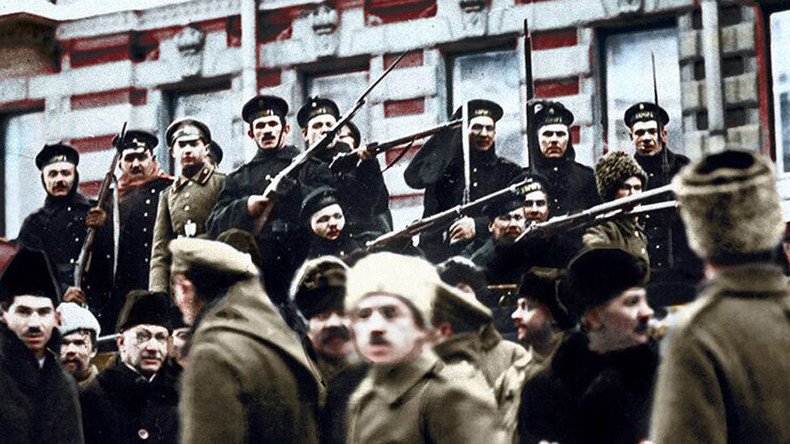
Brazilian artist Marina Amaral contributed to #1917LIVE – RT’s interactive history project dedicated to the 100th anniversary of the 1917 Revolution. Amaral used her signature technique to colorize rare photos from a century ago.
Embark on a journey back in time with RT and see some prominent figures of the day including Lenin and the royal family like you’ve never seen them before.
Emperor Nicholas II with his son
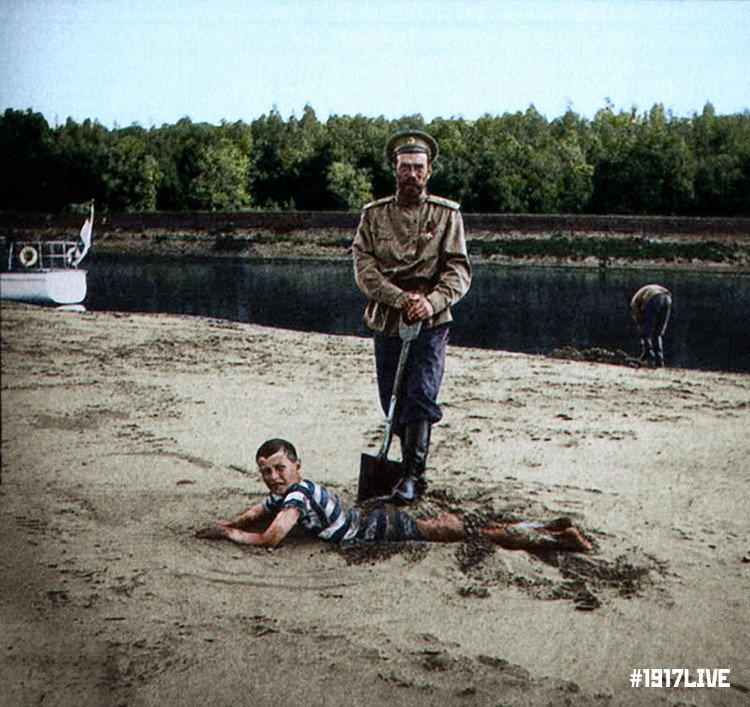
This image is from 1916, before things turned sour for the Russian royal family. Tsar Nicholas II is playing with his son Alexei by the Dnieper River in Mogilev. Alexei suffered from hemophilia, an illness that dominated the family’s entire existence, yet was kept secret from the public.
Nicholas II after abdicating the throne

This photo was taken in Tsarskoye Selo, the royal family’s residence near Saint Petersburg, in March 1917, following the Tsar’s abdication of the throne in favor of his brother, Grand Duke Michael Alexandrovich. The latter rejected the throne and the monarchy fell.
Lenin in Stockholm
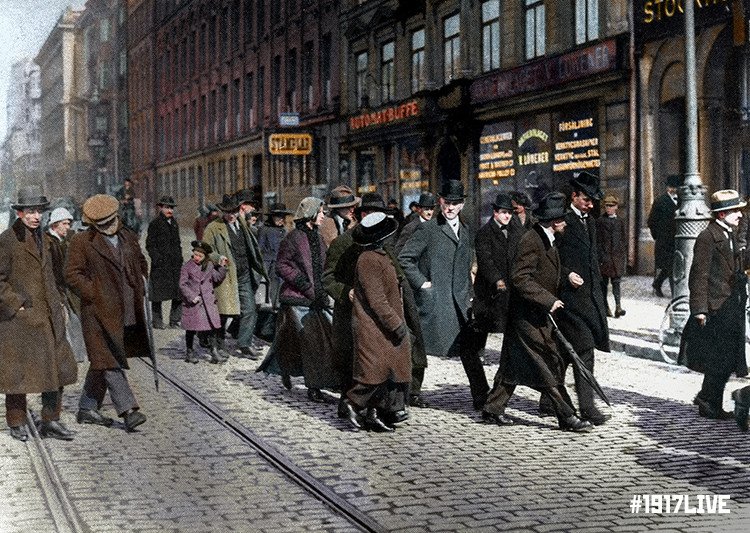
This photo of Lenin in Stockholm was taken by Swedish photographer Viktor Malmström on April 13, 1917 for the Social Democrat newspaper of Sweden. Lenin can be seen with his wife Nadezhda Krupskaya, Grigory Zinoviev, and Swedish socialists Ture Nerman, Carl Lindhagen, and Kata Dalström. He was on his way to Russia from Switzerland (he left the Russian Empire in 1908).
Alexander Kerensky

When the monarchy was overthrown following the February Revolution in 1917 and the Russian Empire ceased to exist, over the course of spring and summer, a Provisional Government was formed with Alexander Kerensky eventually taking the helm. A lawyer by trade, Kerensky was a brilliant politician and public speaker. He lost power to the Bolsheviks during the October Revolution of the same year.
Kerensky with soldiers
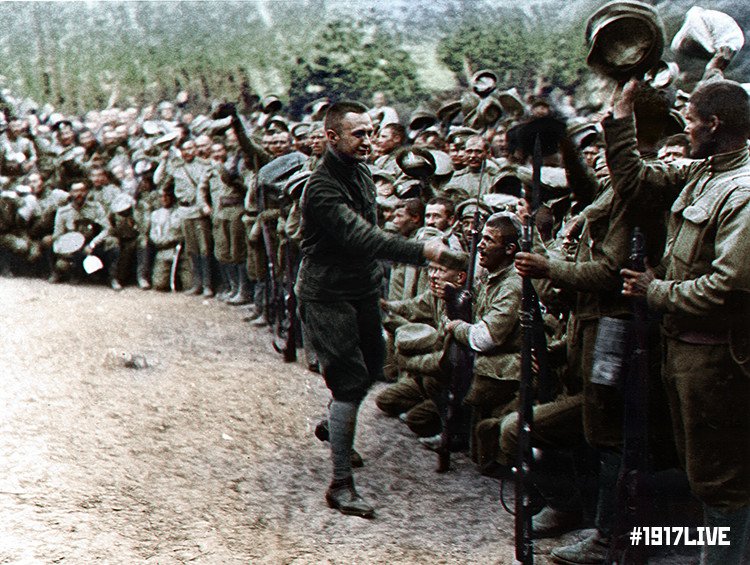
This image is also from spring 1917. Here, the head of the Provisional Government, Alexander Kerensky, can be seen greeting soldiers of the Russian Army, which had lost all its vigor fighting Germany in World War I.
Aurora Fleet
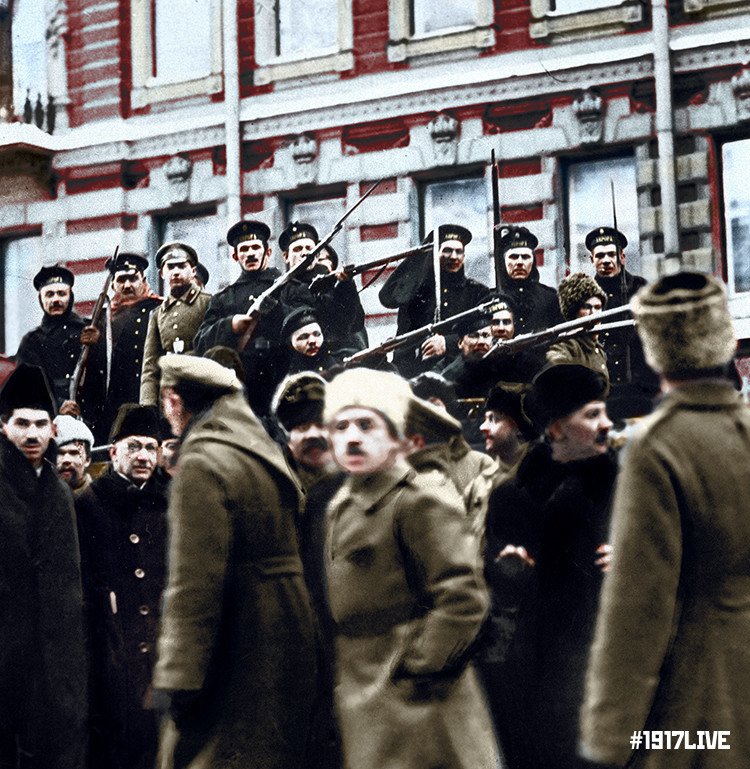
Sailors of Russian cruiser Aurora, docked in Petrograd (Saint Petersburg) for repairs, first took action in the February Revolution of 1917, killing their commander, and then during the October Revolution – the ship famously fired a blank shot signaling the beginning of the assault on the Winter Palace, effectively starting the Bolshevik uprising.
Prince Alexei with Princess Tatiana and her dog Ortipo
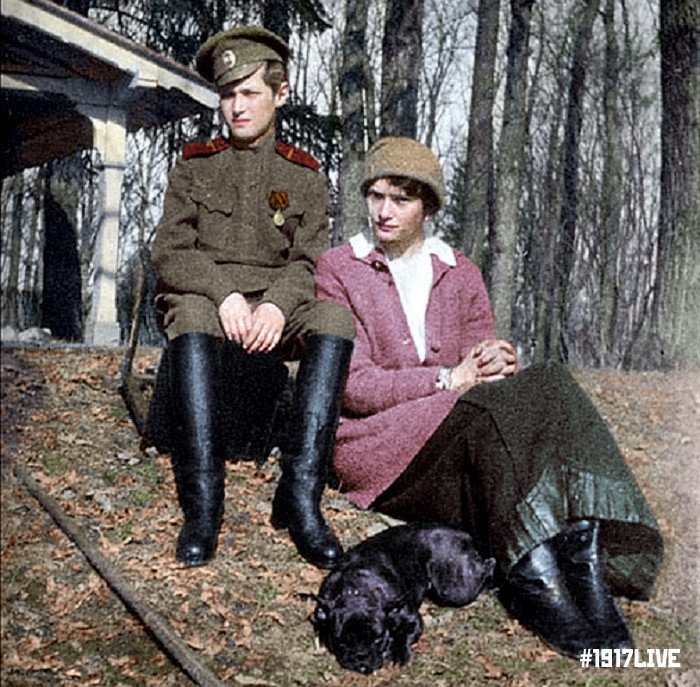
Tatiana was the second child of Emperor Nicholas II and Empress Alexandra. Of Alexei’s four older sisters, she was his closest friend. The family was very fond of their pets, and when they were sent into exile, the Romanovs took their dogs with them.
The Romanov family in Tobolsk
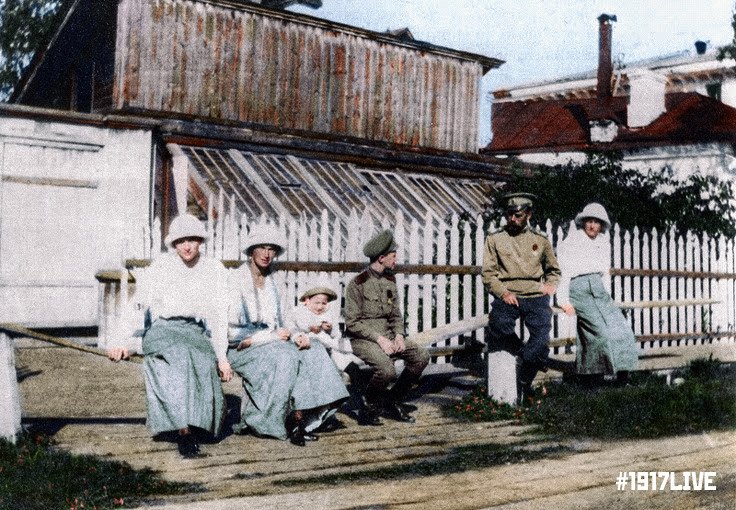
On August 18, 1917, following a week’s journey, the last royal family of Russia reached their second place of imprisonment after Tsarskoye Selo – the rural Siberian town of Tobolsk. The destination was carefully chosen by Provisional Government Chairman Alexander Kerensky, who wanted the ex-emperor as far from the capital as possible to keep Petrograd in order, though he also feared for the family’s safety.
Nicholas II with daughter
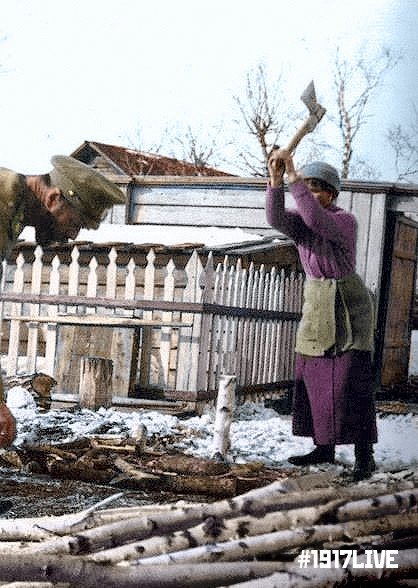
Princess Olga, Nicholas’s oldest daughter, is chopping wood during exile in Tobolsk in this photo. There are many accounts of these outdoor activities in the letters and diaries of the Romanov family. Nicholas II enjoyed time outside in the fresh air with his family, even mentioning once how grateful he was for the time he could spend with his family now that he didn’t have an empire to worry about.
Sailors-Anarchists
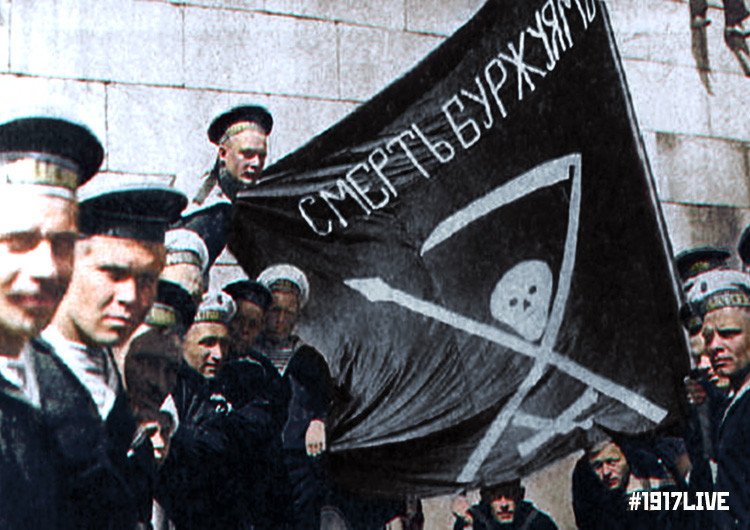
This photo of sailors from the battleship Petropavlovsk was most likely taken during the July uprising or the Kornilov Revolt in August 1917.
Nikolskaya Tower
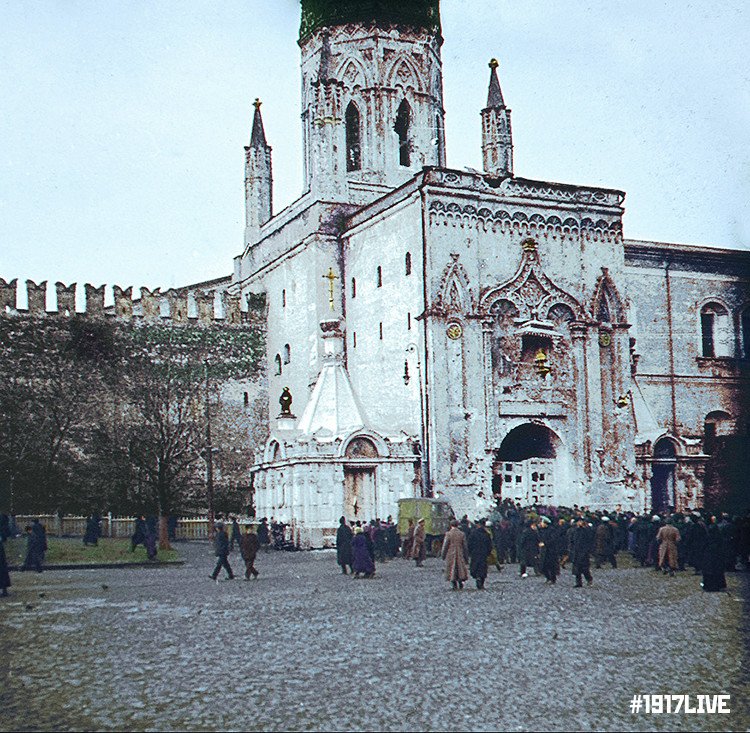
One of the Kremlin’s 20 towers, the Nikolskaya Tower, re-built after being blown-up by Napoleon’s army, was damaged again during the October Revolution in 1917, which can be seen in this image: large bits of decorations are missing, the facade damaged by artillery fire. Later, the Bolsheviks strip it of the two chapels to its sides.
Notice the Kremlin’s color: up until the 1880s, the Moscow Kremlin was regularly whitewashed and was white, but after years of neglect, the white gradually came off, revealing reddish-brown brick.
Small Nikolaevsky Palace
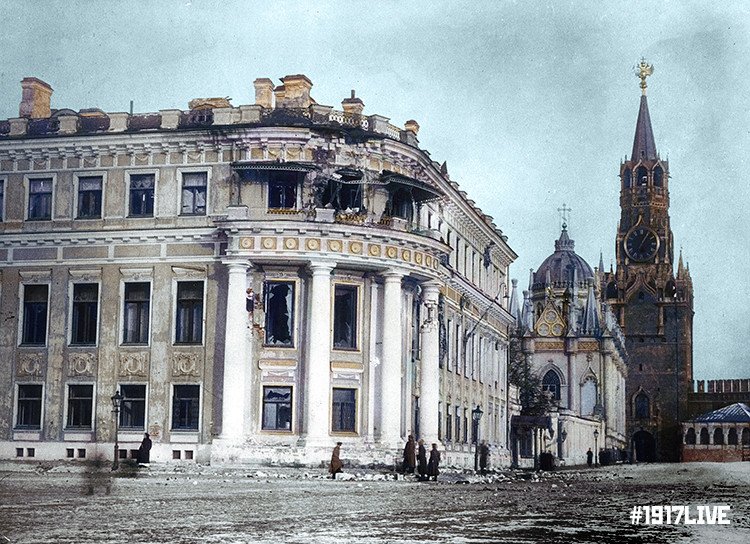
Another building that was severely damaged by the violence of the October Revolution in Moscow was the Small Nikolaevsky Palace near the Kremlin. It was demolished in 1929.
Prince Alexei’s last photo
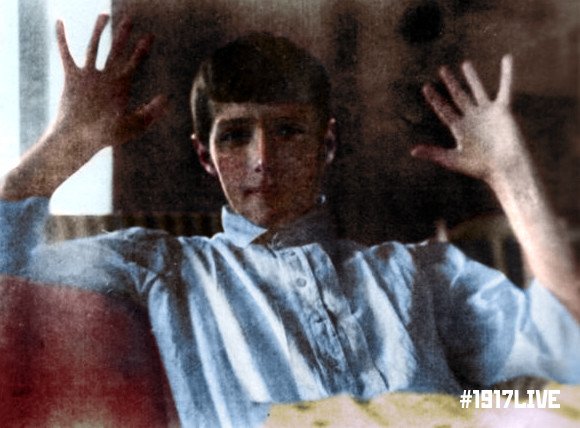
The long-awaited heir to the throne, Alexei, was born with hemophilia – a terrible disease that does not allow blood to clot, meaning that any small bump could result in days of internal bleeding and terrible pain.
The family, knowing of Morphine’s addictiveness, refused to use it on the boy, and sometimes his only escape from the excruciating pain was when he lost consciousness.
Lenin holding a kitten
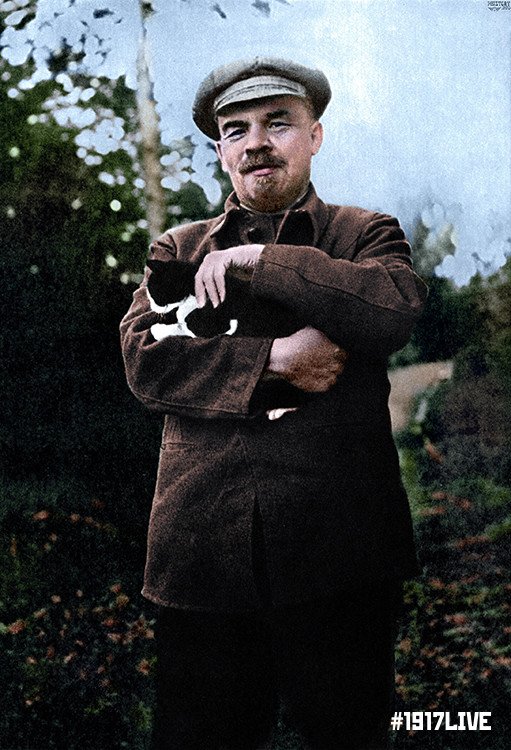
The leader of the Russian Revolution was a big cat-lover. His feline-friendly nature was legendary, with many a tale of Vladimir Lenin and his cats.
Demolition of Alexander III monument in Moscow
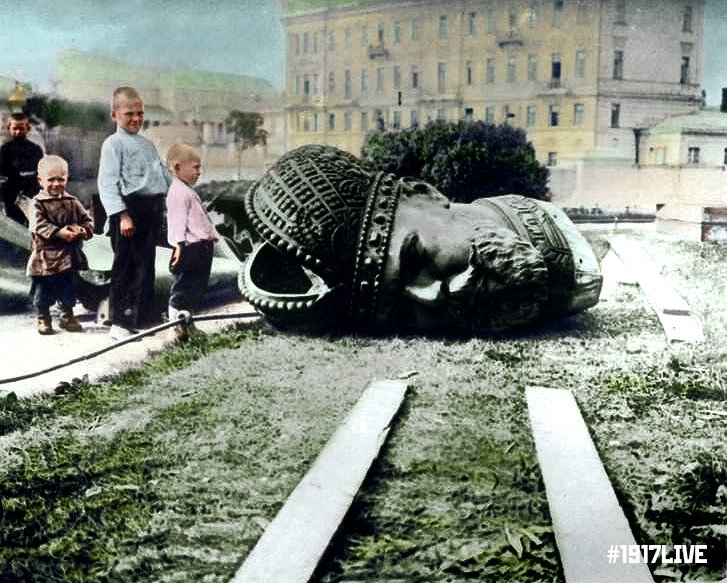
The grand statue of Alexander III, father of Nicholas II, stood for just six years after it was unveiled in 1912. The Bolsheviks tore it down in 1918 along with any other monuments dedicated to the monarchy.
Marina Amaral told RT that the experience of working with #1917LIVE helped her discover surprising details about Russia’s history.
Watch her interview with RT below:
READ MORE: Lenin v Kerensky: Photo-artist Marina Amaral brings revolutionary color to #1917LIVE












